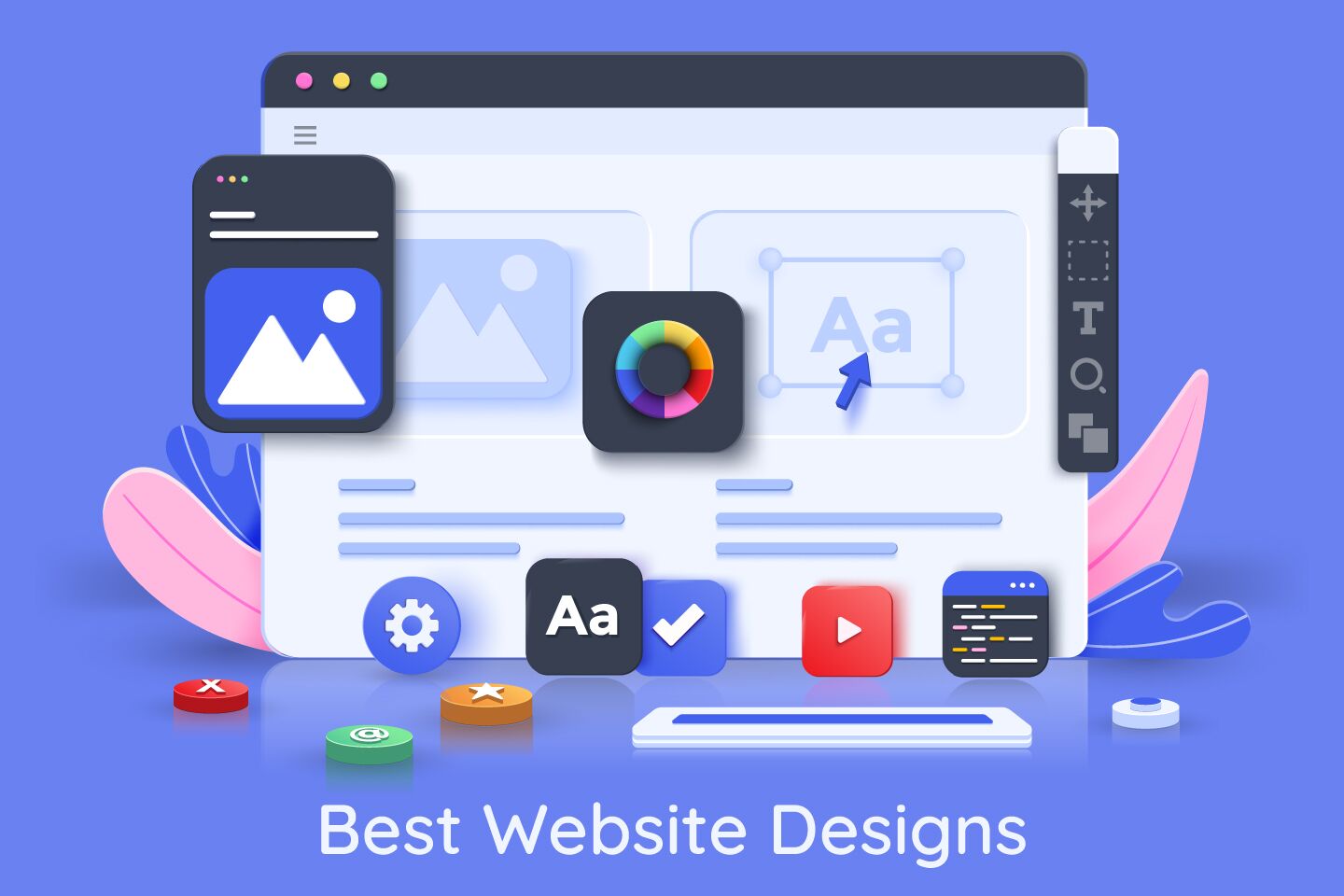Key Elements to Take Into Consideration When Crafting Professional Web Design
An In-depth Overview of the very best Practices in Web Layout for Creating Navigable and intuitive Online Systems
The performance of an online system pivots considerably on its style, which have to not just attract users yet likewise guide them seamlessly via their experience. Finest practices in internet design incorporate a variety of techniques, from responsive formats to obtainable navigating frameworks, all focused on fostering instinctive interactions. Comprehending these concepts is vital for designers and developers alike, as they directly influence customer complete satisfaction and retention. Nevertheless, the intricacies of each practice frequently disclose much deeper effects that can transform a standard interface into an outstanding one. What are the key components that can elevate your system to this degree?
Understanding Individual Experience
Comprehending customer experience (UX) is pivotal in website design, as it directly affects how visitors communicate with a site. A properly designed UX makes sure that individuals can navigate a website without effort, gain access to the details they look for, and total desired actions, such as authorizing or making an acquisition up for a newsletter.
Use concentrates on the ease with which individuals can accomplish tasks on the site. Accessibility ensures that all customers, consisting of those with specials needs, can engage with the web site properly.
Aesthetics play an important role in UX, as visually appealing designs can enhance individual contentment and interaction. Color design, typography, and imagery should be attentively selected to produce a natural brand name identification while likewise assisting in readability and comprehension.
Inevitably, focusing on individual experience in website design fosters higher customer fulfillment, motivates repeat sees, and can dramatically enhance conversion rates, making it a fundamental element of effective electronic strategies.
Value of Responsive Layout
Receptive layout is a vital part of modern web growth, ensuring that web sites offer an optimum viewing experience throughout a wide variety of devices, from desktop computers to mobile phones. As user habits increasingly changes towards mobile surfing, the demand for internet sites to adapt perfectly to various display dimensions has come to be paramount - web design. This versatility not just boosts usability however additionally significantly impacts user engagement and retention
A responsive style employs fluid grids, adaptable photos, and media inquiries, enabling a cohesive experience that keeps capability and aesthetic honesty despite tool. This strategy gets rid of the need for customers to focus or scroll horizontally, leading to a more intuitive communication with the web content.
In addition, search engines, notably Google, prioritize mobile-friendly sites in their positions, making responsive layout crucial for maintaining exposure and access. By taking on responsive style principles, companies can reach a more comprehensive target market and improve conversion prices, as users are more probable to engage with a website that offers a regular and smooth experience. Ultimately, responsive layout is not merely an aesthetic selection; it is a critical need that mirrors a dedication to user-centered design in today's electronic landscape.
Simplifying Navigating Frameworks

Utilizing an ordered framework can considerably improve navigation; key categories should be quickly available, while subcategories must practically comply with. Factor to consider of a "three-click rule," where users can get to any kind of web page within 3 clicks, is helpful in maintaining navigation intuitive.
Integrating a search attribute further boosts functionality, enabling customers to situate content directly. web design. Furthermore, executing breadcrumb tracks can provide individuals with context regarding their place within the website, promoting ease of navigation
Mobile optimization is another essential facet; navigation needs to be touch-friendly, with clearly specified switches and web links to suit smaller sized displays. By reducing the number of clicks needed to gain access to material and making certain that navigation corresponds across all pages, designers can create a seamless user experience that encourages exploration and reduces disappointment.
Prioritizing Availability Standards
Around 15% of the global population experiences some form of disability, making it essential for internet designers to prioritize access requirements visit their website in their projects. Access includes numerous facets, consisting of visual, auditory, cognitive, and motor problems. By sticking to developed standards, such as the Internet Web Content Accessibility Guidelines (WCAG), designers can produce inclusive digital experiences that satisfy all individuals.
One essential practice is to make sure that all material is perceivable. This includes supplying different message for pictures and making certain that videos have records or captions. Moreover, keyboard navigability is crucial, as several individuals depend on key-board faster ways as opposed to computer mouse interactions.
Furthermore, color comparison need to be meticulously considered to accommodate individuals with visual disabilities, making sure that message is legible versus its background. When creating forms, tags and mistake messages must be descriptive and clear to assist customers in finishing tasks properly.
Lastly, conducting usability testing with people who have specials needs can provide very useful insights. By focusing on accessibility, web developers not just abide by lawful criteria yet additionally broaden their target market reach, cultivating an extra comprehensive online setting. This dedication to access is crucial for a really accessible and easy to use internet experience.
Utilizing Visual Pecking Order
Clarity in get redirected here design is extremely important, and using visual hierarchy plays a crucial function in attaining it. Aesthetic power structure refers to the arrangement and presentation of elements in a method that plainly shows their relevance and guides user focus. By purposefully employing dimension, spacing, contrast, and shade, developers can create an all-natural circulation that directs customers through the material effortlessly.
Using bigger font styles for headings and smaller ones for body message develops a clear difference between sections. Furthermore, utilizing different backgrounds or strong colors can draw attention to crucial details, such as call-to-action buttons. White room is similarly essential; it helps to avoid mess and allows individuals to focus on the most essential components, boosting readability and general user experience.
An additional trick have a peek at these guys element of visual hierarchy is making use of imagery. Relevant pictures can enhance understanding and retention of info while additionally breaking up text to make web content more digestible. Ultimately, a well-executed aesthetic power structure not just improves navigating but likewise fosters an instinctive communication with the website, making it extra likely for individuals to achieve their goals efficiently.

Final Thought
In recap, adherence to finest techniques in website design is vital for developing accessible and intuitive on the internet platforms. Highlighting responsive layout, simplified navigating, and accessibility criteria promotes a comprehensive and straightforward setting. web design. Furthermore, the effective use aesthetic hierarchy improves user engagement and readability. By prioritizing these elements, web designers can considerably enhance individual experience, ensuring that on the internet platforms fulfill the diverse demands of all users while assisting in reliable communication and contentment.
The efficiency of an online platform pivots substantially on its layout, which must not only bring in users yet also guide them flawlessly through their experience. By embracing receptive layout concepts, businesses can reach a wider audience and enhance conversion prices, as individuals are a lot more most likely to engage with a website that supplies a constant and smooth experience. By sticking to developed standards, such as the Internet Material Accessibility Standards (WCAG), developers can develop inclusive digital experiences that provide to all customers.
White area is equally vital; it assists to stay clear of clutter and permits users to concentrate on the most important elements, boosting readability and general individual experience.
By prioritizing these elements, internet designers can substantially improve individual experience, making sure that on the internet platforms meet the varied needs of all individuals while assisting in effective interaction and fulfillment.